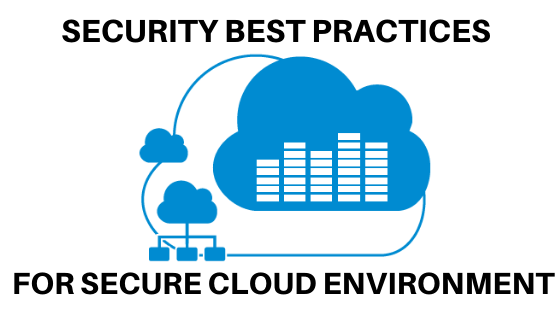Security Best Practices To Ensure Secure Cloud Environment
As we move into the future, more businesses and organization will continue to move their business operations to the cloud. Until now the migration to cloud remain non-stop, all sort of data and business processes are being moved into the cloud. However, many organizations are yet to understand that security of their cloud resources is not just that of the Cloud Administrator, but that of every employee who in one way or the other access these cloud resources.
When we think of critical business application (key to the day-to-day running of businesses) which ensure collaboration among team members and enhanced communication with customers, they all reside in the cloud. The like of Salesforce, Microsoft Office 365, Google G-Suite, Dropbox, HubSpot, Adobe, and many more make this long list that we cannot exhaust. If users of all the aforementioned platform cannot follow security best practices in the cloud environment, no matter how much the controls your administrator tries to put in place to protect the organization’s data, the attackers will still have their way in leveraging on the weakest link.
Mitigating the risks which your cloud data might experience from their interaction with end-users is the reason why we need to implement best practice that will help attain that. The followings are the outlined best practices to ensure a secure Cloud Environment;
Shared Cloud Security Responsibilities
First, you need to understand that there are shared responsibilities between you and your Cloud Service Provider (CSP) pertaining to security. When you sign an agreement with a cloud provider, they should distinguish what aspects of cloud security your organization is responsible for and which aspects the CSP will take care of. Below is the chart that shows these responsibilities across various cloud services as it may be applicable to your organization.

source: Microsoft
Manage Access Control
The ability to identify and authenticate users, assign users the access rights and to create and enforce access control policies for all cloud resources are expected capabilities under access management in the cloud. The use of multi-factor authentication – also known as two-factor authentication – to ensure that only authorized personnel can log in to your cloud apps and access that sensitive data.
Monitor Your Cloud Environment for Security Threats
With the help of Cloud Access Security Broker (CASB) monitor cloud service usage within their organization and implement centralized controls to ensure that cloud services are used securely. Real-time monitoring and analysis of user activities can help you spot irregularities that deviate from normal usage patterns, e.g., log in from a previously unknown IP or devices.
Establish and Enforce Cloud Security Policies.
The need for written guidelines that specify who can use cloud services, how they can use them and which data they can interact within the cloud will provide clarity of purpose within the organization on matters relating to cloud. Basic requirements should also be clearly stated on what security technologies should be present on the endpoint’s employees are using to access the organization cloud services.
Conduct Audit and Penetration Testing
Organizations should conduct regular audits of their cloud security capabilities. The audit should include an analysis of all vendors’ capabilities, including double-checking to make sure that they are meeting the security terms specified in your Service Level Agreements (SLAs).
Train Your Employees
Just like any technology, your enterprise should take some time to train any employees that will be using the cloud environment on the best security practices you’ve established. The biggest security threat to your Cloud technologies is your own enterprise and its employees. An employee that misuses your cloud environment – whether due to negligence or lack of knowledge – can open up the floodgates to harmful actors looking to enter your system.

